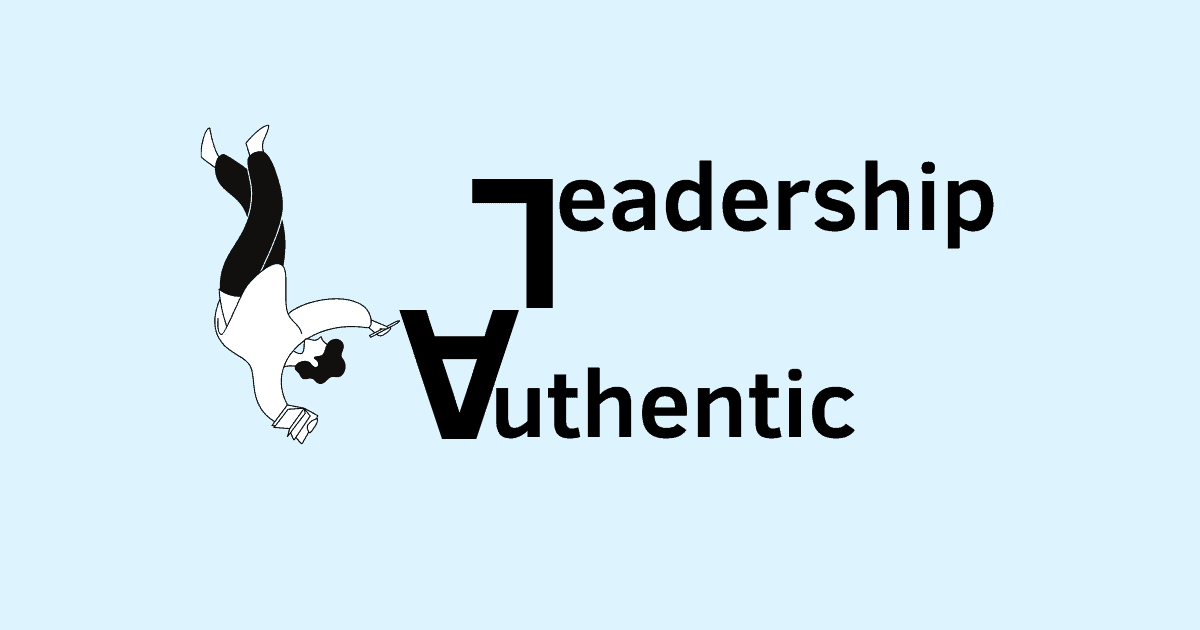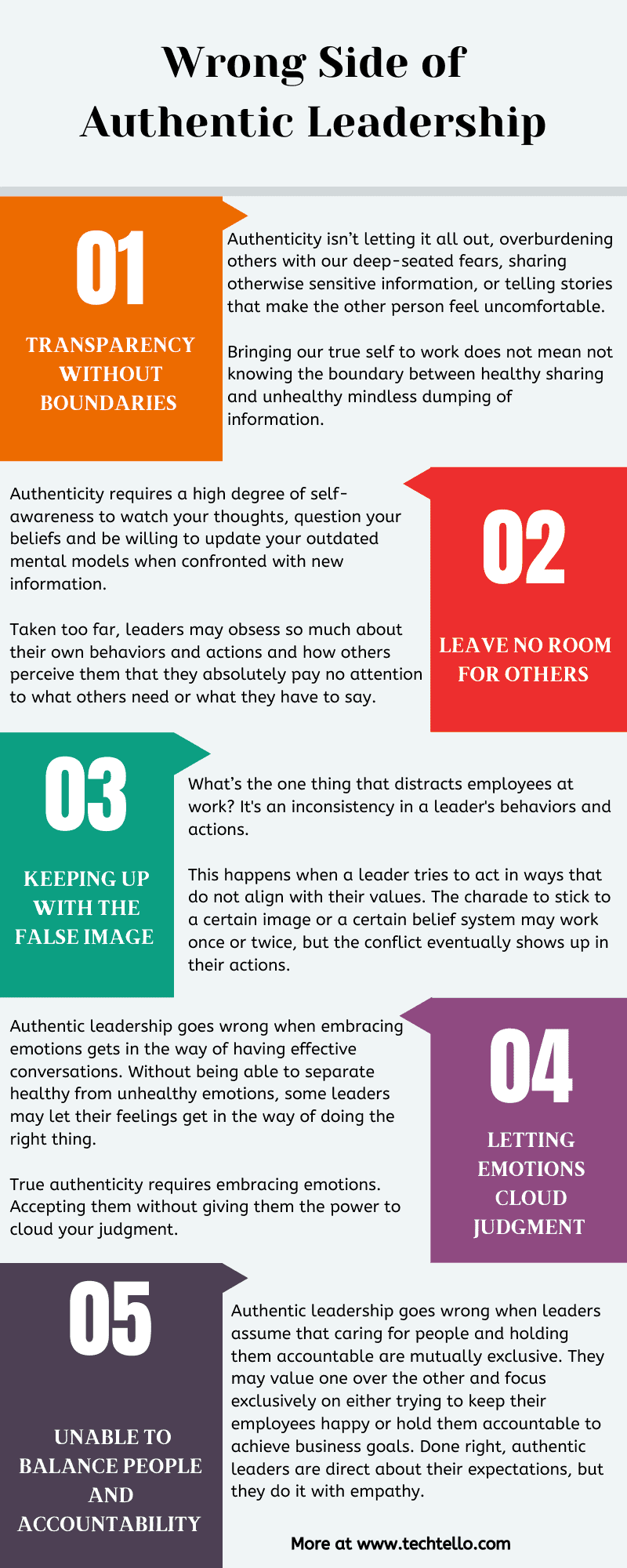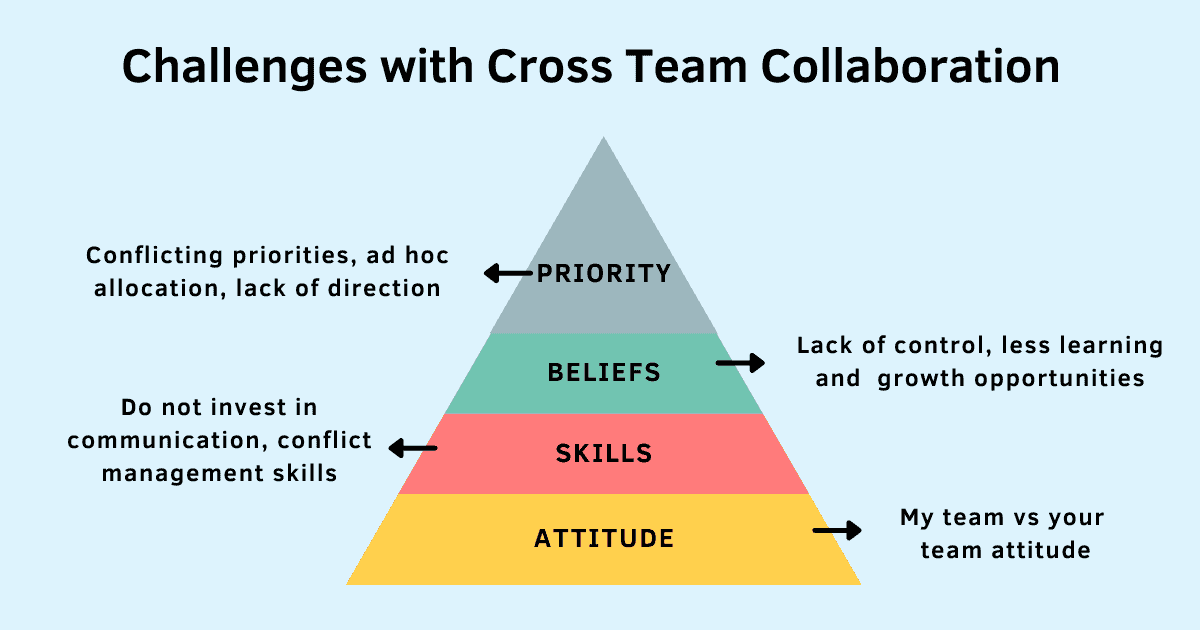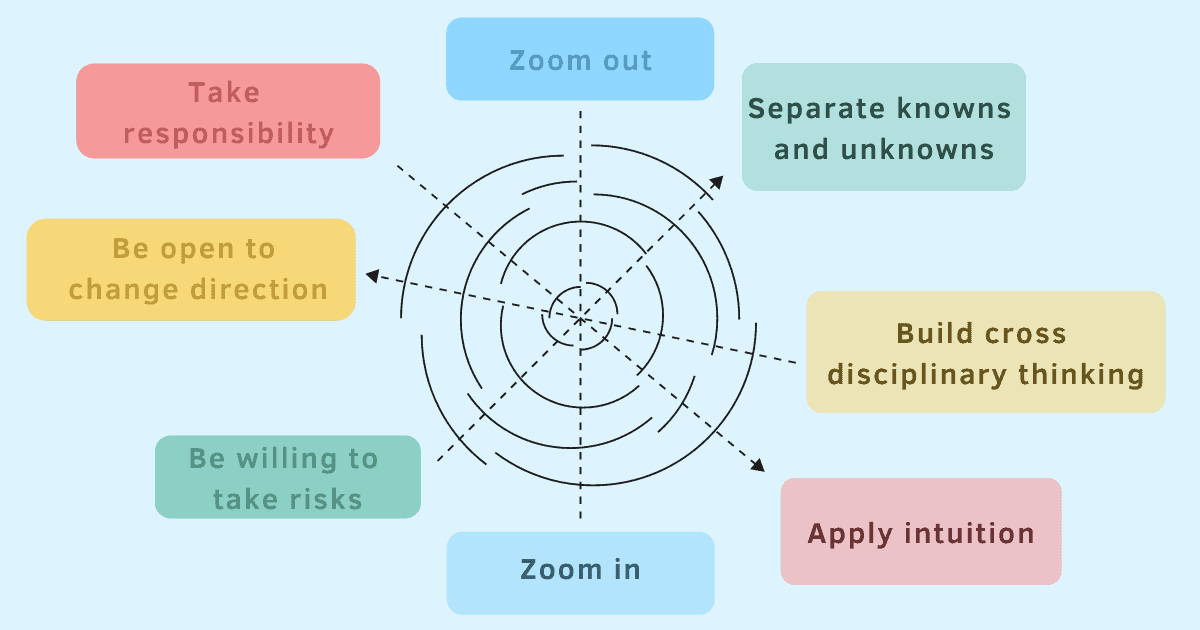Being on the Wrong Side of Authentic Leadership

In my discussion with leaders, the topic of authenticity keeps coming up again and again. The idea of authentic leadership is actually quite appealing. After all, if a leader isn’t authentic, they can’t really be effective.
It does feel great to see these leaders put in the effort to leverage the power of authentic leadership to grow their people and their organization.
The challenge most of them face though is that their right intent does not necessarily translate into the right action. They are theoretically inspired by the idea, but find it practically challenging to give life to those ideas.
The biggest mistake I see them make is trying to live up to some grand image. To match their behaviors and actions to an idealized version of an authentic leader and feeling exhausted and defeated when they fail to inspire the necessary changes in their teams and their organizations. By getting hung up on becoming their best versions, they fail to show up their authentic versions.
Being authentic means being yourself, not someone else. Someone who’s not a perfect human being. Someone who doesn’t have all the answers. Someone who makes mistakes. Someone who has both strengths and weaknesses. Someone who is ready to show up as a real human being and isn’t afraid to show their emotions.
Bill George writes in True North “The reality is that no one can be authentic by trying to be like someone else. There is no doubt you can learn from their experiences, but there is no way you can be successful trying to be like them. People trust you when you are genuine and authentic, not an imitation.”
Let’s understand what specific practices make leaders fall on the wrong side of authentic leadership.
The wrong side of authentic leadership
Transparency without boundaries
Authenticity isn’t letting it all out, overburdening others with our deep-seated fears, sharing otherwise sensitive information, or telling stories that make the other person feel uncomfortable.
Bringing our true self to work does not mean not knowing the boundary between healthy sharing and unhealthy mindless dumping of information. “Vulnerability without boundaries leads to disconnection, distrust, and disengagement. Letting it all out or boundaryless disclosure is one way we protect ourselves from real vulnerability,” says Brené Brown in Daring Greatly.
There’s nothing wrong with trying to be a leader who practices transparency. But many leaders take it too far. They fail to draw a line between what’s relevant and what’s irrelevant. What may overwhelm people from what will help them in making better decisions. What part of the information matters and what’s better kept quiet.
Authentic leadership becomes a burden when leaders cross this boundary. The only way to protect transparency from becoming an excuse to justify your misuse comes with asking the right questions:
- Why is this information important to me?
- How is it helpful to the other person?
- How is it relevant to the discussion?
- Is this even the right person to share this information with?
Activating your brain to think about what information makes sense in the context of your current situation will help you practice authentic leadership without its side effects.
Leave no room for others
Authenticity requires a high degree of self-awareness to watch your thoughts, question your beliefs and be willing to update your outdated mental models when confronted with new information.
It requires understanding not only how you present yourself but also how others feel your presence. Taken too far, leaders may obsess so much about their own behaviors and actions and how others perceive them that they absolutely pay no attention to what others need or what they have to say.
Unwilling to identify the deeper needs of their people, they fail to connect with them in any meaningful way. They fail to build the trust that’s the foundation to accomplish anything meaningful in an organization.
Consider this example. The more time a leader spends in a meeting worrying about how they are coming across to others, the less time and energy they will have to focus on the agenda or the real problems that require their attention. In trying too hard to be authentic, they will actually fail to be effective.
Jim Collins writes in Good to Great “The moment a leader allows himself to become the primary reality people worry about, rather than reality being the primary reality, you have a recipe for mediocrity, or worse.”
Being authentic requires understanding where you are, where you want to be, and consciously acknowledging that you can’t do it alone. It requires being “present” around others. It requires identifying their strengths and leveraging them. Most importantly, it requires acknowledging your limitations and telling others you need them along the way.
Keeping up with the false image
What’s the one thing that distracts employees at work? It’s an inconsistency in a leader’s behaviors and actions. When they say one thing and do another thing. When there’s inconsistency in how they show up at work.
A leader may not realize it, but this inconsistency has a dramatic impact on their employees’ productivity at work. After all, our human mind is great at cooking theories and creating stories when confronted with conflicting information. The busy brain that’s trying to put two and two together can’t really focus on the task at hand. Lack of proper information also makes us lean towards the negative. We may assume bad intent, pass judgment and imagine the worst possible outcomes.
This happens when a leader tries to act in ways that do not align with their values. The charade to stick to a certain image or a certain belief system may work once or twice, but the conflict eventually shows up in their actions.
Practicing authentic leadership requires knowing your value system and tuning in your actions to align with that value system. It’s not acting in ways that others expect you to behave, but knowing what’s the right thing to do and making a conscious effort in doing just that even if it makes a few people unhappy in the short term.
Letting emotions cloud judgment
True authenticity requires embracing emotions. Accepting them without giving them the power to cloud your judgment. Considering them as useful signals to make thoughtful decisions. Feeling them without letting them be a reason for inaction.
Authentic leadership goes wrong when embracing emotions gets in the way of having effective conversations. Without being able to separate healthy from unhealthy emotions, some leaders may let their feelings get in the way of doing the right thing. For example, instead of resolving conflicts, they may try to avoid or delay them to save themselves from the strong emotions that such conversations tend to evoke. They may also shy away from sharing honest feedback with the worry that it might hurt the other person.
Instead of building emotional agility by delivering the right information to the right person in the right manner, they may let their false sense of authenticity get in the way of their desire to find the right answers, encourage others to open up, and inspire the free flow of information.
Douglas Stone writes in Difficult Conversations “Most of us assume that our feelings are static and nonnegotiable, and that if they are to be shared authentically, they must be shared “as is.” In fact, our feelings are based on our perceptions, and our perceptions are negotiable. As we see the world in new ways, our feelings shift accordingly. Before sharing feelings, then, it is crucial to negotiate — with ourselves.”
Authentic leadership shows up when leaders do not dismiss their negative emotions or hide their feelings. Rather, their behavior is a product of their own conscious choice to act positively despite feeling those feelings.
Unable to balance people and accountability
Authentic leadership goes wrong when leaders assume that caring for people and holding them accountable are mutually exclusive. They may value one over the other and focus exclusively on either trying to keep their employees happy or hold them accountable to achieve business goals.
They fail to realize that they don’t need to be nice and kind to people to show they care. And caring for them doesn’t mean they don’t care about the outcomes.
Done right, authentic leaders are direct about their expectations, but they do it with empathy. Instead of passing judgment or jumping to conclusions, they take time to understand another person’s point of view. Instead of imposing their own priorities on others, they value their preferences. Instead of focusing exclusively on positive emotions, they give space to their people to express their genuine emotions. By embracing uncertainty and tapping into their motivation, they help their teams stay resilient when faced with challenges and setbacks.
Balancing high expectations and employees’ learning and growth creates a culture of excellence in which their teams as well as their organization thrives.
Summary
- Authentic leadership separates an effective and highly valuable leader from an ineffective one.
- Understanding the wrong side of authenticity is crucial to avoid going down a rabbit hole.
- Authentic leadership is not boundaryless freedom to say and do things as you desire. It requires drawing a clear distinction between information that adds value and information that acts as a burden.
- Authentic leadership requires self-awareness without self-obsession. Focusing on how you come across to others does not mean that you stop paying attention to their needs.
- Authentic leadership isn’t about sticking to a certain image or adopting a certain belief system. It requires knowing your values and aligning your actions to be consistent with those values.
- Authentic leadership requires embracing emotions without letting them get in the way of having effective conversations.
- Finally, authentic leadership requires adopting a mindset where caring for people and holding them accountable aren’t mutually exclusive.






























